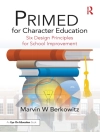‘This new application for cultural proficiency is a testament to the educator-student relationship based on respect, understanding, and a common purpose, no matter what the background or culture of the student happens to be. We can′t afford for more students to disengage from education. Thankfully, the authors provide a framework that builds on where we are and that moves us toward a positive, asset-building environment rather than a destructive deficit mind-set.’
—Kathleen Gavin, Coordinator of Professional Development
Great Prairie Area Education Agency, Burlington, IA
Develop culturally proficient policies and practices that create opportunities for students of poverty!
Written to counter the perspective that students from low-income backgrounds come to school with certain deficits that prevent them from learning, this timely resource provides educators with the knowledge and skills to maximize educational opportunities for all students, independent of students′ socioeconomic status.
The authors examine equity and social issues through the lens of cultural proficiency, an approach that emphasizes how educators can break down self-imposed barriers to student success through self-reflection, personal change, and organizational reform. Focusing on students′ strengths, this guide provides:
- An examination of how poverty intersects with other groupings, such as race, ethnicity, language acquisition, and gender
- Effective teaching and leadership strategies grounded in the latest research
- Vignettes and case studies showing the faces of poverty and the barriers they face
- Reflective activities and self-check protocols that guide readers toward effective practices
Culturally Proficient Education helps teachers and school leaders clear the path to success for students of all social and economic backgrounds.
Cuprins
Foreword by Dennis Parker
Acknowledgments
About the Authors
Part I. Why Poverty and Cultural Proficiency?
Introduction
1. Asset-Based Approaches to Students From Low Income or Impoverished Communities
2. The Middle Class School in Communities of Poverty
3. The Cultural Proficiency Tools Build on Assets
Part II. Pro-social School Applications
4. Culturally Proficient Pedagogy
5. Culturally Proficient Leadership Support for Instruction
6. Policy Development to Ensure and Support Teaching and Learning
Part III. A Call to Action
7. A Call to Action: The Time Is Now
Appendix A: Cultural Proficiency Conceptual Framework
Appendix B: State Teachers’ Association Retreat Script
Appendix C: Taniko’s Poem
Appendix D: How to Use Cultural Proficiency Books
References
Index
Despre autor
Keith Myatt, Ed.D., was a full-time instructor in the School Leadership Programs at California State University, Dominguez Hills where developing school leaders dedicated to dismantling systems of oppression and focusing on Cultural Proficiency were at the heart of the program. Prior to that he was at the Los Angeles County office of Education in Educational Leadership Services as a director in the California School leadership Academy (CSLA). He is coauthor of Culturally Proficient Education: An Asset-Based Response to the Conditions of Poverty (Corwin, 2010) and Culturally Proficient Coaching, Supporting Educators to Create Equitable Schools, (Corwin, 2020). He has worked at the Museum of Tolerance providing seminars for educators wishing to establish Cultural Proficiency as an element of their work and provided seminars for educators supporting credential candidates with the tools of Cultural Proficiency and Coaching. He has recently been working to implement the California Administrator Performance Assessment and is currently helping to develop an Ed.D. program at Dominguez Hills dedicated to creating school systems focused on the success of each and every child.












